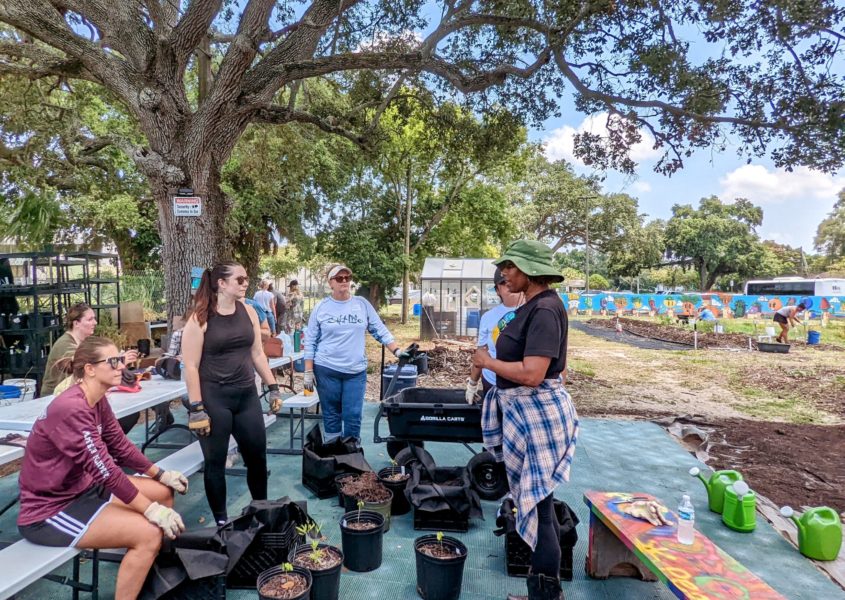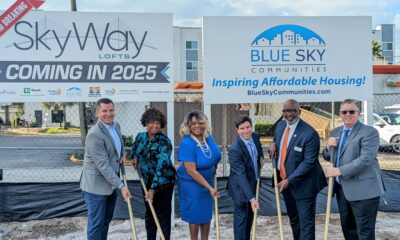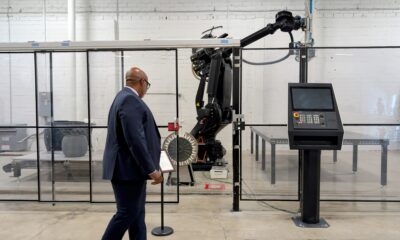Thrive
City officials hope to grow ‘food forest’ program

Where other people see a small piece of empty land in an otherwise well-developed city, many St. Petersburg officials envision a way to benefit residents and the environment.
At the onset of Thursday’s Health, Resiliency & Sustainability Committee meeting, Councilmember Brandi Gabbard noted frequent discussions regarding increasing the city’s tree canopy and bolstering its urban agriculture efforts. Food forests, she said, accomplish both.
“It brings the two together in a way that will not only help us improve our shade trees,” said Gabbard. “But then also help with making some of those shade trees able to feed our community.
“It’s a perfect marriage in that way.”
There are now more than 20 known food forests and community and school gardens within St. Petersburg. While Gabbard noted the city has worked to support urban agriculture, she said much work remains to ensure residents have access to fresh and healthy food.
“Make sure they have the ability to feed not only themselves but also their neighbors,” added.

A map showing known locations of food forests and community and school gardens within St. Petersburg. Screengrab.
Dean Hay, staff liaison for the Urban Forestry Committee, led the presentation on adopting a city-sponsored food forest program. He said work began in earnest in March, and program organizers have since met with organizations – like the St. Pete Food Policy Council (SFPC) – and community members for stakeholder engagement.
The SFPC recommended implementing five critical aspects for a successful program: inclusivity, such as with renters; accessibility; education, awareness and ongoing support; affordability; and autonomy for a local organization that oversees the initiative.
In addition, Hay said program organizers would focus on growing food forests in low-income areas certified as food deserts, along transit and bike lanes and near community and faith-based organizations – especially food distribution centers serving children.
When implementing the program, Hay suggested concentrating on relaying the benefits of eating healthy food and offering educational sessions to new farmers. That curriculum would cover farm management, developing volunteer events, pest and disease control, constructing rainwater systems and food distribution.
“That’s something we haven’t worked out to this point,” added Hay.
Nine city departments lend their expertise to the program. Hay noted, “those run the gamut” from planning and conservation to parks and recreation – which oversees the St. Pete Youth Farm – to sanitation, which will assist with brush removal and mulching efforts.
Over 70 community food forests exist in the U.S., relayed Hay, and city officials discussed the best model to follow. These include municipally-run programs and hybrid, public-private partnerships.
“The nonprofit organization, by far, is the most successful model,” he said. “It’s the most prolific … and they can work a little bit less expensively and on a parallel path to the municipality, and have very specific goals.”
The five most significant food forests in the nation, added Hay, are managed by nonprofits on publicly owned land.
He said barriers to program success include funding, ongoing education, language challenges – and, most importantly – land acquisition. He relayed that the average cost to buy and maintain one fruit tree through its first four years of growth is $945.
However, he said that statistic “seems a little high.” He did note that a food forest is a long-term investment as it can take 10-12 years for a new tree to bear fruit or nuts.
Hay said city administrators need to adopt an organizational structure and appropriate funding to move a pilot forward. They will then need to connect the relevant city departments, develop a work plan, apply for United States Department of Agriculture (USDA) grants and conduct additional stakeholder engagement.
Councilmember Ed Montanari, a longtime proponent of increasing the city’s shade canopy, expressed his concern that uncared-for fruit trees could attract rodents. While he supports creating food forests, he said the city should take a measured approach to the program, similar to its adoption of electric scooters.
“I think we have a lot of opportunities here around the city, and you identified a lot of them,” said Montanari to Hay. “But there’s still some … I think we need to make sure we frame it up the right way and be smart about it.”
According to accompanying documents, the city could use additional settlement money from the BP Deepwater Horizon oil spill as seed funding. The general fund could then help sustain the program. City officials, administrators, community leaders and stakeholders will continue meeting to discuss the framework further.
Mayor Ken Welch has expressed his support for a program that could help mitigate food insecurity issues plaguing parts of St. Petersburg, Gabbard relayed. She also agreed with Chair Gina Driscoll that residents need a dedicated department or administrator that provides crucial resources and information.
“I will commit to you – that we will continue to work on this,” said Gabbard. “We will put an expediency on it. I don’t like to die by PowerPoint every few months about the same topics.”







